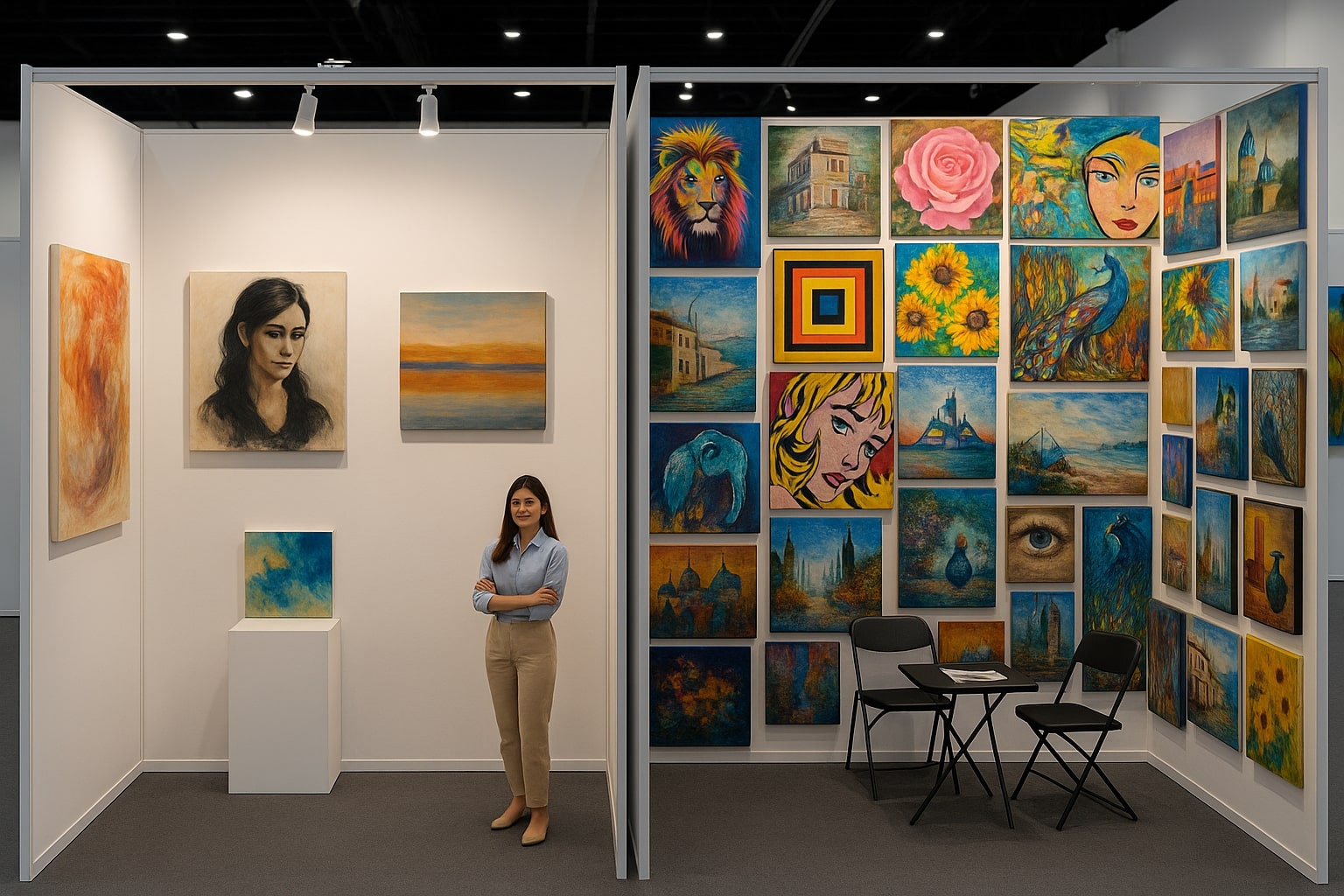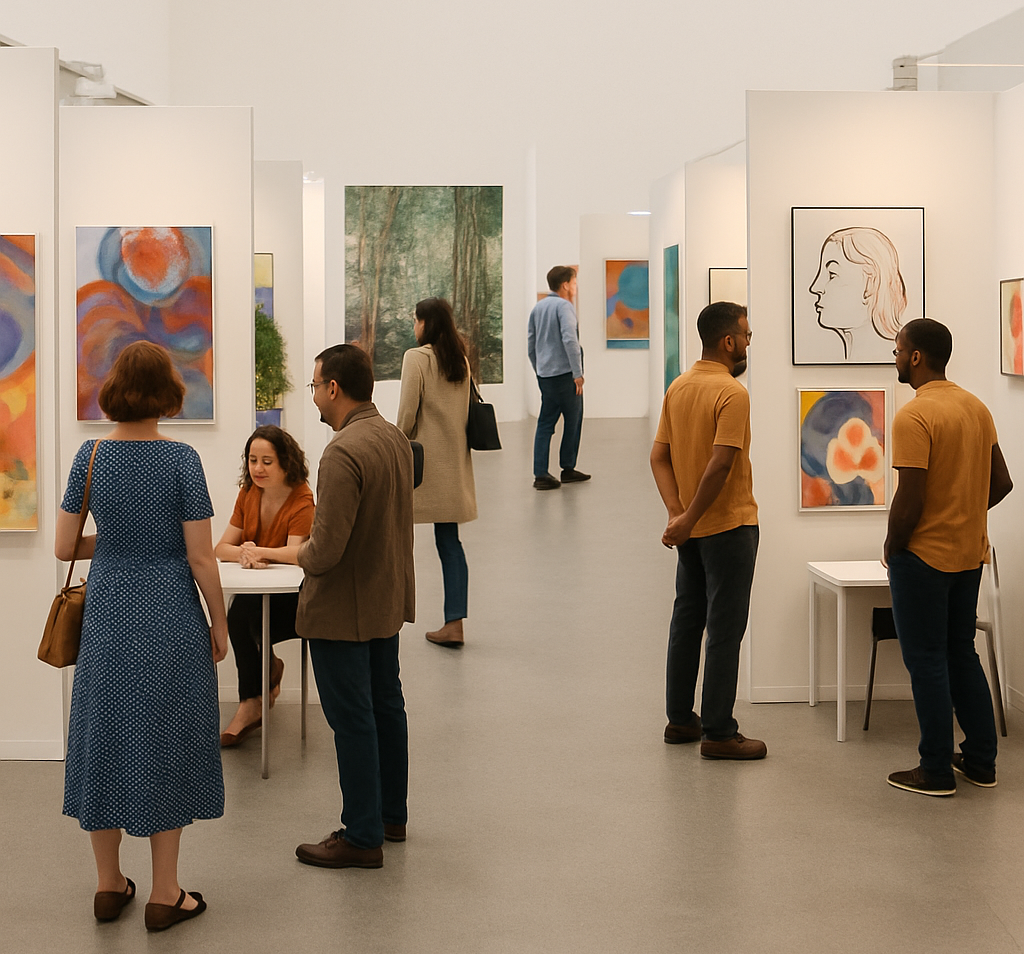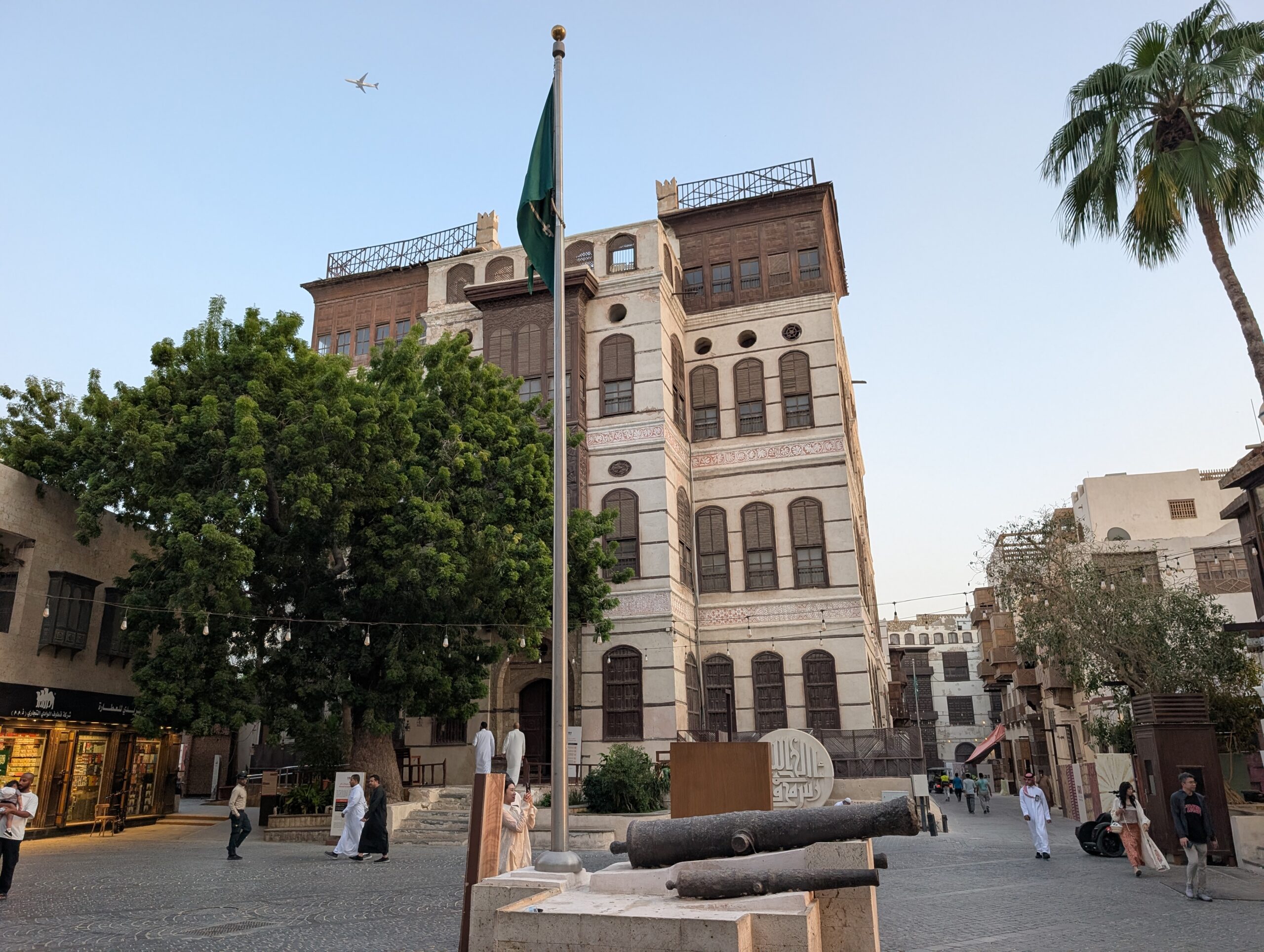Introduction – The Hidden Cost of “Affordable” Art Collectives
Every year at international art fairs – from World Art Dubai to smaller regional events – countless artists face the same decision: Should I exhibit on my own, or join an art collective that offers “shared” wall space?
At first glance, collectives seem like a good deal. They advertise low entry costs, easy participation, and no organizational hassle. But after years of curating at World Art Dubai, I’ve seen first-hand how many of these collectives operate: they charge artists high fees for minimal services, squeeze multiple names into a single booth, and rarely curate the works professionally. The result? Artists get less visibility, fewer sales, and little to no return on investment.
Instead, renting your own booth – even as a first-time exhibitor – offers significantly more value, credibility, and opportunities for growth. Here’s why.
1. Collectives Prioritize Quantity Over Quality
Most collectives exist to maximize their revenue, not to curate strong presentations. The business model is simple:
-
Rent one booth from the fair.
-
Sublet the wall space to as many artists as possible.
-
Accept everyone who pays, regardless of quality or consistency.
The outcome is usually a cluttered booth filled with dozens of unrelated artworks. Visitors, collectors, and even curators often skip these stands because they look more like a bazaar than a professional gallery.
By contrast, a solo booth allows your art to breathe. Every piece is contextualized, and your personal story can shine through – something buyers value deeply when considering a purchase.
2. Limited Space Means Limited Sales
When you share a booth with 10 or more artists, your actual space might shrink to 1–2 meters of wall – barely enough for 2–3 artworks. For the same amount of money (or slightly more), you could rent a small solo booth and show a curated selection of your best works.
Think of it like this: collectors are drawn to artists who present a clear vision. A solo booth communicates professionalism and confidence. A corner in a crowded collective rarely does.
3. You Lose Control Over Branding and Presentation
In a collective booth, you usually have no control over booth design, lighting, or layout. Your works compete with neon abstracts, oversized portraits, and sometimes even decorative art with little artistic merit. This dilutes your personal brand.
With your own space, you control:
-
Booth design & colors
-
Lighting setup
-
Printed materials (catalogs, brochures, business cards)
-
How visitors enter and engage with your work
This kind of branding is invaluable for long-term career growth.
4. The Internet Makes Solo Participation Easier Than Ever
In the past, joining a collective felt like the only way to break into fairs. But today, with resources like The Art Fair Guy and platforms such as scan.art, every artist can plan their own participation:
-
Research fairs that accept solo artists (World Art Dubai, Discovery Art Fair Frankfurt, Art Graz, etc.)
-
Apply directly online – many fairs welcome solo exhibitors.
-
Use online checklists and digital tools to plan shipping, booth setup, and marketing.
In other words: you no longer need a middleman to guide you through the process.
5. Long-Term Benefits Outweigh the Risk
Yes, a solo booth may feel like a bigger upfront investment. But it positions you as a serious, independent artist. Collectors notice that. Galleries notice that. And fairs often give more visibility to solo exhibitors in catalogs, floor plans, and marketing.
By participating solo, you also:
-
Build direct relationships with collectors and curators.
-
Keep full control over pricing and commissions.
-
Strengthen your CV with a proper fair presentation.
These benefits compound with every fair you attend – something collectives can never offer.
Case Study: World Art Dubai
As curator of World Art Dubai, I’ve seen hundreds of collective booths over the years. Most are overcrowded, underserviced, and ultimately disappointing for the artists as well as the buyers involved. In contrast, the solo booths – even small 3×3 meter stands – often attract far more attention and sales.
Collectors want to connect with you, the Artist, not with a random group of strangers under a generic collective name.
Apply to World Art Dubai as a Solo Artist!
6. Where Collectives Make Sense (and Where They Don’t)
To be clear: not all collectives are bad. In some cases – for emerging artists testing a market, or for thematic groups that share a strong curatorial vision – they can work. But beware of collectives that:
-
Accept anyone willing to pay.
-
Offer no professional curation.
-
Provide little transparency on what your fee covers.
If it feels like a quick money-making scheme, it probably is.
Conclusion – Invest in Yourself
If you’re serious about your art career, go solo. Even if it’s your first fair, the benefits outweigh the risks: more visibility, more control, more credibility.
With the tools available today, every artist can successfully plan and execute their own fair participation. And remember: The Art Fair Guy exists to guide you step by step – from choosing the right fair to optimizing your booth, building your collector base, and making the most of every exhibition opportunity.
💡 Thinking about exhibiting solo at your first fair? Contact us at The Art Fair Guy for tailored consulting on choosing the right event, budgeting, and booth strategy. Contact us at office@theartfairguy.com





